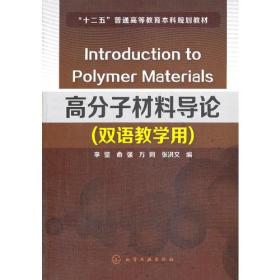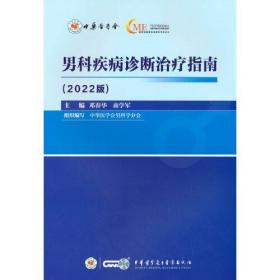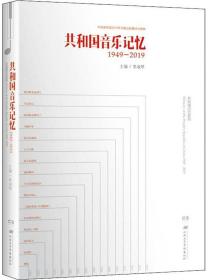
高分子材料导论(李坚)(双语教学用)
¥ 13.28 3.4折 ¥ 39 九品
仅1件
北京东城
认证卖家担保交易快速发货售后保障
作者李坚 编
出版社化学工业出版社
出版时间2014-03
版次1
装帧平装
货号A14
上书时间2024-12-10
- 最新上架
商品详情
- 品相描述:九品
图书标准信息
- 作者 李坚 编
- 出版社 化学工业出版社
- 出版时间 2014-03
- 版次 1
- ISBN 9787122192172
- 定价 39.00元
- 装帧 平装
- 开本 16开
- 纸张 胶版纸
- 页数 261页
- 【内容简介】
- 本教材共10章。1. Introduction (绪论)、2. Polpmer preparation (聚合物的制备)、3. Polymer structure,molecular motion and transition (聚合物结构、分子运动和转变)、4. Polymer Properties(聚合物的性质)、5. Analysis and Testing of Polymers(聚合物表征和测试)、6. Plastics(塑料)、7.Elastimers (弹性体)、8. Polymer Composites(聚合物基复合材料)、9. Coatings (涂料)、10 Recent developments in polymer science and technology(聚合物科学技术新进展)。
- 【作者简介】
-
李坚,常州大学材料科学与工程学院,院长 教授,合肥工业大学,本科毕业。华东化工学院(华东理工大学)硕士毕业。日本大阪大学,获博士学位。
工作及研究经历:
1988,7— 2000,12;常州大学(江苏化工学院),材料工程系工作。教学与科研。副教授。高分子教研室主任。教授的课程有:高分子化学,功能高分子,专业英语,离子交换树脂等。研究方向:水性聚氨酯,聚丙烯酸酯等粘合剂的研究;大分子过氧化物的研究。
2001,1—2001,12; 英国剑桥大学 (Melville Laboratory for Polymer Synthesis, University of Cambridge)访问学者。研究方向:聚合物发光材料的合成及性能研究(PLED);聚芴的合成。导师:Andrew B Holmes (聚合物(PPV)发光的发现者之一)。
2002,1—2007,3;日本三洋电机株式会社研究本部工作。研究方向:聚合物发光材料的合成及性能研究(PLED);有机TFT的研究;有机太阳能电池的研究;聚芴及其共聚物的合成。
2007,3--- 至今,常州大学材料科学与工程学院材料化学教研室工作。教授。教学与科研工作。主要研究方向:聚合物有机半导体的合成与性能研究;利用ATRP制备聚丙烯酸酯嵌段共聚物及其应用;涂料粘合剂的研发。
主要科研成果:
长期从事有关聚合物发光(PLED),有机TFT,有机太阳能电池及水性聚氨酯的研究。参加过多项省部级科研项目的研发工作。发表论文:在国内外杂志上发表相关论文几十篇。专利:获得美国,日本及中国有关聚合物发光材料(PLED),有机TFT及有机太阳能电池的专利共15件, 其中已公开的有 9 件。
教学工作:
长期从事教学工作,主讲了高分子化学、功能高分子材料、离子交换树脂、高分子专业外语、高分子材料导论(双语)等课程。 - 【目录】
-
Chapter 1 Introduction
1.1 Classification of polymerizations
1.1.1 Condensation and addition polymerization
1.1.2 Step and chain polymerizations
1.2 Classification of Polymers
1.2.1 Classification by source
1.2.2 Classification by mechanical behavior and application
1.2.3 Classification by synthesis reaction
1.2.4 Classification by chain structure
1.2.5 Classification by processing characteristics
1.3 Physical State, Property and Application of Polymers
1.3.1 Crystalline and amorphous behavior
1.3.2 Thermal transitions
1.3.3 General properties of polymers
1.3.4 Applications of polymer materials
1.4 Polymer Processing
1.4.1 Ingredients of polymer materials
1.4.2 Processing methods
1.5 Development of Polymer Science and Engineering
1.5.1 Brief history of polymer materials
1.5.2 Establishment of polymer science
1.5.3 The development of synthetic polymers
Problems
Chapter 2 Polymer Synthesis
2.1 Step Polymerization
2.1.1 Basis for analysis of polymerization kinetics
2.1.2 Kinetics of step polymerization
2.1.3 Molecular weight control in linear polymerization
2.2 Radical Chain Polymerization
2.2.1 Rate of radical chain polymerization
2.2.2 Molecular weight
2.2.3 Chain transfer
2.2.4 Inhibition and retardation
2.2.5 Process conditions
Problems
Chapter 3 Polymer Structure, Molecular Motions and Transitions of Polymers
3.1 General Introduction for Polymer Structures
3.1.1 Structural groups
3.1.2 Linear chain polymers
3.1.3 Configurations of polymer chains
3.1.4 Conformation
3.1.5 Copolymers
3.1.6 Network polymers
3.2 Characteristics of Macromolecular Motions and Transitions
3.2.1 The Glassy Region
3.2.2 The Glass Transition Region
3.2.3 The Rubbery Plateau Region
3.2.4 The Rubbery Flow Region
3.2.5 The Liquid Flow Region
3.3 Molecular Motion and Thermal Transitions
3.3.1 Theories of glass transition
3.3.2 Factors affecting glass transition temperature
3.3.3 The crystalline melting point
3.3.4 Factors affecting the crystalline melting point, Tm
Problems
Chapter 4 Solid State Properties of Polymers
4.1 Mechanical Properties
4.1.1 Forces Versus Deformation Properties
4.1.2 Toughness
4.1.3 Creep
4.2 Optical Properties
4.2.1 Haze
4.2.2 Transparency
4.2.3 Gloss
4.3 Surface Contact Properties
4.3.1 Friction
4.3.2 Cling
4.3.3 Wear Resistance
4.4 Barrier Properties
4.4.1 Permeation through Polymers
4.4.2 Barrier Property Analysis
4.5 Electrical Properties
4.5.1 Electrical Resistance
4.5.2 Capacitive Properties
4.5.3 Dielectric Strength
4.5.4 Arc Resistance
4.5.5 Corona Treatment
4.5.6 Factors Influencing Polymers in Electrical Applications
4.6 Weather Resistance
4.6.1 Natural Outdoor Weathering
4.6.2 Accelerated Outdoor Weathering
4.6.3 Artificial Weathering
Problems
Chapter 5 Characterization and Testing of Polymers
5.1 Gel Permeation Chromatography
5.1.1 GPC Instrumentation
5.1.2 Calibration
5.1.3 Selection and Assembly of Detectors
5.2 Infrared Spectroscopy
5.2.1 Instrument and Experimental Method
5.2.2 Applications to Polymers
5.3 X—ray Diffraction Analysis
5.3.1 Experimental Methods
5.3.2 Application to Polymers
5.4 Nuclear Magnetic Spectroscopy
5.4.1 Experimental Methods
5.4.2 Application to Polymers
5.5 Thermal Analysis
5.5.1 Thermogravity Analysis (TGA)
5.5.2 Differential Scanning Calorimetry (DSC)
5.6 Light and Electron Microscopy
5.6.1 Light Microscopy
5.6.2 Electron Microscopy
Problems
Chapter 6 Plastics
6.1 Polyethylene
6.1.1 Low Density Polyethylene (LDPE)
6.1.2 High density polyethylene (HDPE)
6.1.3 Linear low density polyethylene (LLDPE)
6.1.4 Ethylene—vinyl acetate copolymer (EVA)
6.1.5 Crosslinked polyethylene (XPE)
6.2 Polypropylene (PP)
6.2.1 Isotactic polypropylene
6.2.2 Syndiotactic polypropylene (SPP)
6.3 Polyvinyl Chloride (PVC)
6.3.1 Polymerization
6.3.2 Structure and Properties
6.3.3 Copolymers
6.3.4 Application
6.4 Polystyrene (PS) and Related Polymers
6.4.1 Polymerization of styrene
6.4.2 Structure and properties
6.4.3 Copolymers of styrene
6.4.4 Syndiotactic polystyrene (SPS)
6.4.5 Application
6.5 Polymethyl Methacrylate (PMMA)
6.5.1 Polymerization
6.5.2 Structure and property
6.5.3 Application
6.6 Polyamide (Nylon)
6.6.1 Polyhexamethylene adipamide (nylon—66)
6.6.2 Other important polyamides
6.7 Polyethylene terephthalate (PET)
6.7.1 Polymerization
6.7.2 Property and application
6.8 Polyoxymethylene (POM)
6.8.1 Polymerization
6.8.2 Property
6.8.3 Application
6.9 Polycarbonate (PC)
6.10 Polytetrafluoroethylene (PTFE)
6.10.1 Polymerization
6.10.2 Structure
6.10.3 Property
6.10.4 Effect of structure on property
6.10.5 Fabrication and processing
6.10.6 Application
6.10.7 Fluorocarbon copolymers
Problems
Chapter 7 Elastomers
7.1 Basics for Elastomers
7.2 Morphology of Thermoplastic Elastomers
7.2.1 General characteristics
7.2.2 Properties and effect of structure
7.2.3 Mechanical properties
7.2.4 Thermal and chemical properties
7.3 Diene Elastomers
7.3.1 Butadiene—based elastomers
7.3.2 Polyisoprene
7.3.3 Polychloroprene
7.3.4 Styrene —butadiene rubber (SBR)
7.3.5 Metathesis elastomers
7.3.6 Nondiene elastomers
7.3.7 Thermoplastic elastomers
Problems
Chapter 8 Polymer Composites
8.1 Introduction to Composites
8.2 A Brief History of Polymer Composites
8.3 General Use Considerations
8.4 Technology Overview
8.4.1 Reinforcements
8.4.2 Matrices
8.4.3 Coupling agents
8.4.4 PMC forms
8.4.5 Fabrication processes
8.5 Applications of Polymer Composites
8.6 Nanocomposites
8.7 View of the Future
Problems
Chapter 9 Paint and Coatings
9.1 Principles of Coating
9.1.1 Rheology
9.1.2 Viscosity behavior
9.1.3 Surface chemistry
9.2 Composition of Paint
9.2.1 Introduction
9.2.2 Binder
9.2.3 Pigments
9.2.4 Solvents
9.2.5 Additives
9.2.6 Fillers (Extenders)
9.3 Theory of Adhesion
9.3.1 Introduction
9.3.2 Mechanical bonding
9.3.3 Electrostatic attraction
9.3.4 Chemical bonding
9.3.5 Paint diffusion
9.4 Coating Materials
9.4.1 Acrylics
9.4.2 Alkyd resins
9.4.3 Epoxies
9.4.4 Polyurethanes
Problems
Chapter 10 Developments in Polymer Science and Technology
10.1 Synthesis Technology
10.1.1 Living radical polymerization
10.1.2 Living cationic polymerization
10.2 New Polymer Materials and Applications
10.2.1 Dendritic (highly branched) polymers
10.2.2 Conducting Polymers
10.2.3 Bio—degradable polymers
Problems
References
点击展开
点击收起
— 没有更多了 —












以下为对购买帮助不大的评价